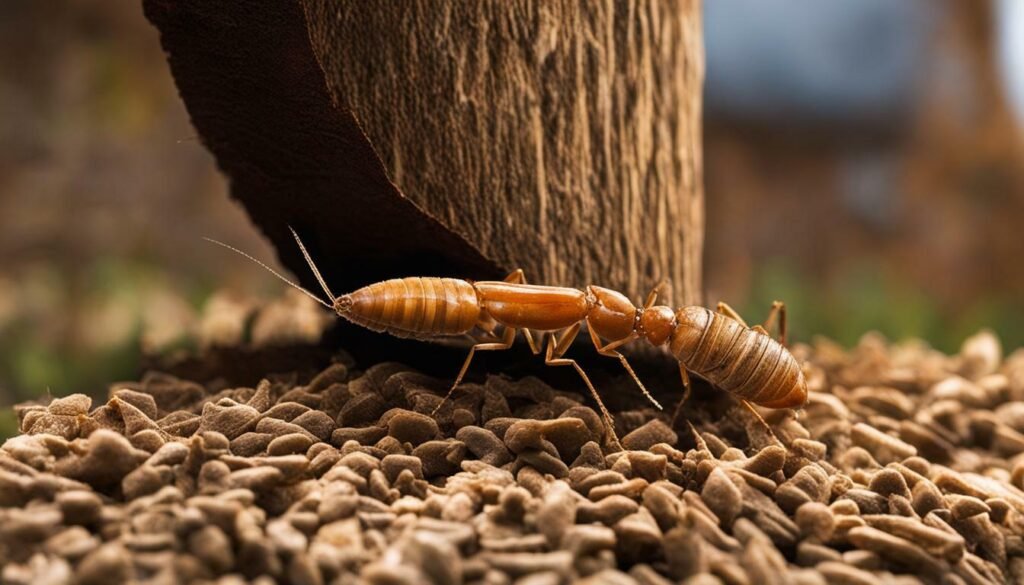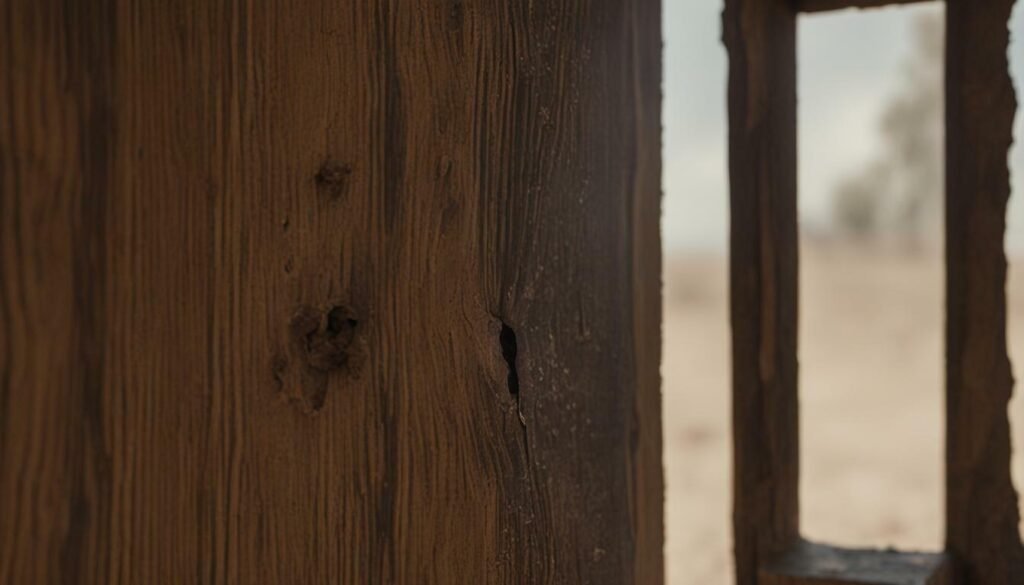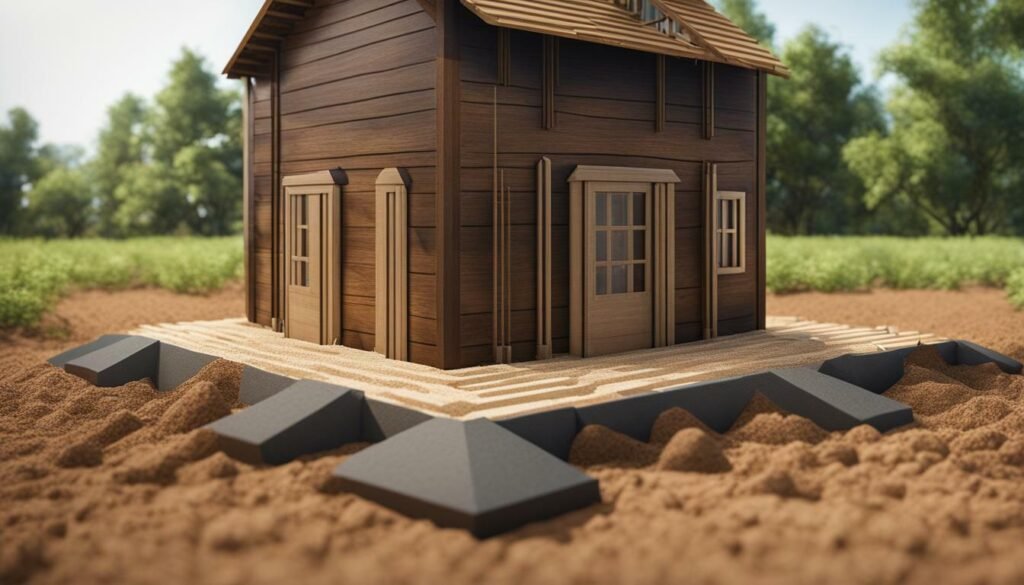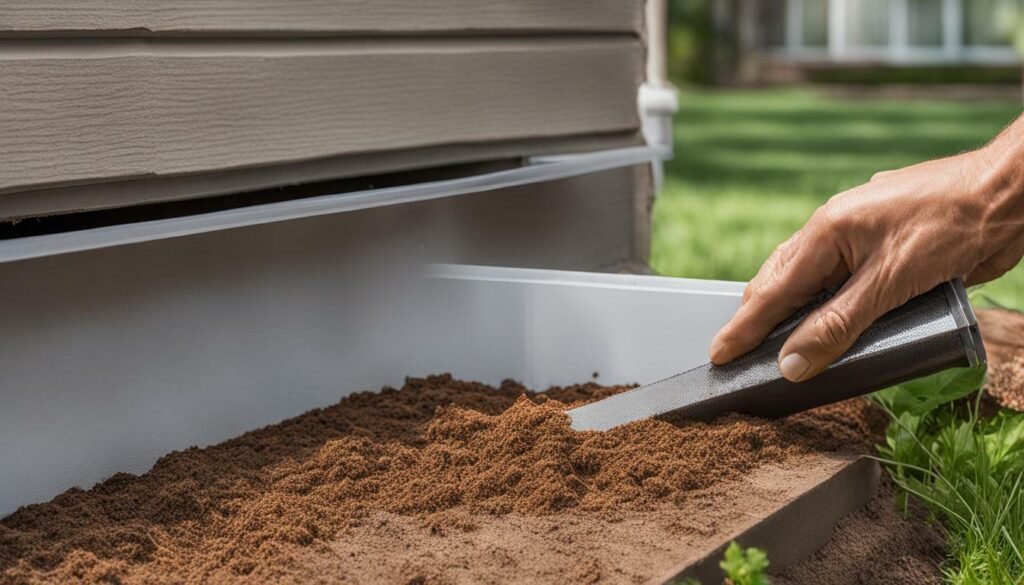If you’re wondering “Can termites come back after treatment?” you’re not alone. Understanding the facts about termite extermination and the potential for reinfestation is crucial for protecting your home effectively. Termites are resilient creatures that can find a way back into your house if the proper barriers are not in place to deter them from re-entry. Different types of termites require different treatment methods, and if the treatment used is not effective for the specific type of termite infestation you have, they may not be completely eliminated.
Termites reproduce rapidly, so even if a few survive the initial treatment, they can quickly rebuild their colony. This is why it is highly recommended to hire professional termite exterminators who have the expertise and experience to identify the termite species and implement targeted control strategies. Additionally, signing up for a termite maintenance plan can provide ongoing services to ensure continuous protection against termite reinfestation.
Prevention is key when it comes to termite control. By taking proactive measures such as repairing damaged wood, eliminating excess moisture, sealing cracks and entry points, and avoiding direct contact between soil and wood, you can significantly reduce the risk of termite recurrence. Annual termite inspections are also essential for detecting and treating any potential reinfestations, allowing you to take prompt action to protect your home.
Remember, termites can and do come back after treatment, so it’s crucial to be proactive in your approach to termite control. By understanding the facts, hiring professionals, and implementing preventative measures, you can safeguard your home from these destructive pests.
Key Takeaways:
- Termites can come back after treatment if a proper barrier is not in place.
- Different types of termites require different treatment methods, so it’s important to use the most effective approach for your specific infestation.
- Hiring professional termite exterminators and signing up for a maintenance plan can provide ongoing protection.
- Prevention is crucial, including repairing damaged wood, eliminating excess moisture, and avoiding direct contact between soil and wood.
- Regular termite inspections are essential for detecting and treating any potential reinfestations.
Types of Termite Treatment and Their Durability
Termite treatment methods vary in their durability and success rates, making it essential to choose the right approach for effective and long-term control. Different types of termites require different treatment strategies, and understanding the durability of these methods is crucial in ensuring lasting protection for your home.
One commonly used termite treatment method is liquid termiticides. These are chemical solutions that are applied to the soil around the foundation of a home. The liquid creates a barrier, preventing termites from entering and protecting against reinfestation. While liquid termiticides can be highly effective, their durability can vary depending on factors such as soil type, climate, and the specific product used. Regular inspections and ongoing maintenance are necessary to monitor the effectiveness of this treatment and make any necessary reapplications.
Another popular termite treatment method is termite baits. These devices contain a toxic substance that termites consume and take back to their colonies, effectively eliminating the entire population. Termite baits offer a more targeted approach and can be highly effective in eradicating termites. However, their durability depends on the proper installation, monitoring, and regular replenishment of bait stations. It is essential to follow the manufacturer’s instructions and work closely with a professional pest control company to maximize the longevity and success of this treatment method.
It is important to note that the durability of any termite treatment method can be compromised by factors such as structural alterations, plumbing leaks, or landscaping changes that create new access points for termites. Regular maintenance and preventive measures, such as eliminating moisture sources and sealing cracks and openings, are crucial in maintaining the durability and effectiveness of any termite treatment. Consulting with a trusted termite professional will ensure that you choose the most appropriate treatment method for your specific situation and receive guidance on how to maintain long-term termite control.


Signs of Termite Return: What to Look Out For
Even after treatment, it’s important to remain vigilant for signs that termites may be returning to your home. Recognizing these signs early can help prevent a full-blown infestation.
Here are some key indicators to watch out for:
- Visible Swarmers: Termite swarmers are winged termites that emerge from their colonies in search of mates and new areas to infest. Spotting swarmers indoors or outdoors around your property is a clear sign that termites may have returned.
- Wood Damage: Inspect wooden structures, furniture, and flooring for any signs of damage such as hollowed-out or weakened wood, blistering, or peeling paint. Termites feed on cellulose, which makes wood an attractive food source for them.
- Mud Tubes: Termites construct narrow tunnels made of soil and saliva, known as mud tubes, to protect their colonies while they forage for food. If you find these tubes along exterior walls, foundation, or within crawl spaces, termites may have returned.
- Frass: Termite droppings, also known as frass, are small pellets that resemble sawdust or coffee grounds. If you notice these pellets around your home or near wooden structures, it could be a sign of termite activity.
If you observe any of these signs, it’s important to take immediate action to prevent further damage. Contact a professional pest control company that specializes in termite eradication to conduct a thorough inspection and determine the appropriate course of treatment.
Remember, prevention is key to avoiding termite recurrence. Regularly inspect your property for any signs of termites, and take proactive measures such as sealing cracks, repairing damaged wood, eliminating excess moisture, and avoiding direct contact between soil and wood. By staying vigilant and implementing preventative strategies, you can protect your home from future termite infestations.


Table: Common Signs of Termite Return
| Sign | Description |
|---|---|
| Visible Swarmers | Winged termites seen indoors or outdoors |
| Wood Damage | Hollowed-out or weakened wood, blistering, peeling paint |
| Mud Tubes | Narrow tunnels made of soil and saliva |
| Frass | Small pellets resembling sawdust or coffee grounds |
Hiring Termite Professionals for Effective Treatment
When it comes to termite treatment, relying on the expertise of professional exterminators can make all the difference in achieving effective and long-lasting control. Termites are resilient pests and eliminating them requires specialized knowledge and targeted strategies.
Professional termite professionals have the experience and training to identify different types of termites and determine the most suitable treatment methods for each case. They understand the behavior and habits of termites, allowing them to implement effective control measures.
Additionally, termite professionals have access to advanced tools and products that are not available to the general public. These specialized treatments are designed to effectively eliminate termite colonies and ensure long-term protection against reinfestations.
Moreover, termite professionals can provide ongoing maintenance plans to protect your home from future termite problems. Regular inspections and preventive treatments can catch any potential reinfestation early on, reducing the risk of extensive damage and costly repairs.


| Benefits of Hiring Termite Professionals: |
|---|
| Expertise in identifying termite species |
| Effective treatment methods tailored to specific termites |
| Access to specialized tools and products |
| Ongoing maintenance plans for long-term protection |
Preventing Termite Reinfestation: Essential Strategies
Alongside treatment, implementing preventative measures is crucial to prevent termites from coming back. Discover effective strategies to safeguard your home from termite reinfestation.
When it comes to termite prevention, there are several key strategies that homeowners can implement to create a strong barrier against re-infestation. These preventative measures work hand in hand with termite treatment to ensure long-lasting protection for your home.
Repairing Damaged Wood
One of the first steps in preventing termite re-infestation is to repair any damaged wood in and around your home. Termites are attracted to decaying or moist wood, so it’s important to remove and replace any rotting or water-damaged materials. Regularly inspect wooden structures such as decks, fences, and outdoor furniture, and promptly address any signs of damage. By keeping your wood in good condition, you can deter termites from finding a suitable food source.
Eliminating Excess Moisture
Moisture control is another crucial aspect of termite prevention. Termites thrive in damp environments, so it’s essential to address any sources of excess moisture. Fixing leaks in pipes, faucets, and roofs can help reduce humidity levels in your home. Additionally, ensure that your gutters are clean and properly functioning to redirect water away from your foundation. By keeping your home dry, you create an environment that is less attractive to termites.
Sealing Cracks and Entry Points
Sealing cracks and entry points is an effective way to prevent termites from finding their way back into your home. Inspect the exterior of your house for any gaps around windows, doors, and utility openings, and seal them with caulk or weatherstripping. This will not only help keep termites out but also improve energy efficiency. Additionally, consider installing physical barriers such as metal mesh screens or sand barriers to further deter termite entry.
| Preventative Measures | Effectiveness |
|---|---|
| Repairing Damaged Wood | High |
| Eliminating Excess Moisture | High |
| Sealing Cracks and Entry Points | High |
Avoiding Direct Soil-Wood Contact: A Key Preventive Measure
One of the key preventive measures to keep termites at bay is avoiding direct contact between soil and wood. Termites rely on the soil as a bridge to gain access to your home, and once they find their way in, they can cause extensive damage. By creating an effective physical barrier, you can significantly reduce the risk of termite reinfestation.
So, how can you create this barrier? Start by ensuring that the soil around your home’s foundation slopes away from the structure. This helps to prevent water from pooling near the foundation, as excess moisture attracts termites.
Additionally, you can install a termite shield or a metal barrier between the soil and any wooden structures. This barrier prevents termites from tunneling through the soil and reaching the wood. Another effective option is to use concrete or brick foundations, as termites cannot penetrate these materials.
| Preventive Measure | Effectiveness |
|---|---|
| Creating a sloping soil gradient | Highly effective |
| Installing a termite shield | Highly effective |
| Using concrete or brick foundations | Highly effective |
Remember, preventing termite recurrence requires a multi-faceted approach. In addition to creating a physical barrier, it’s important to address other factors that attract termites, such as excess moisture. Fix any leaks, redirect downspouts away from the foundation, and ensure proper ventilation in crawl spaces to reduce humidity levels.
By implementing these preventive measures and being proactive in your termite control efforts, you can significantly reduce the risk of termites returning to your home. Remember, it’s always advisable to consult with termite professionals for expert advice and treatment options tailored to your specific situation.


The Role of Moisture Control in Termite Prevention
Excess moisture can attract termites to your home, making moisture control an essential aspect of preventing termite reinfestation. Discover effective methods to keep your home dry and termite-free.
One of the first steps in preventing termite recurrence is to address any moisture issues in and around your home. Termites thrive in damp environments, so reducing moisture levels is crucial. Here are some effective methods for moisture control:
- Repair any leaking pipes, faucets, or roofs to prevent water accumulation.
- Ensure proper drainage by regularly cleaning gutters and downspouts.
- Improve ventilation in basements, attics, and crawl spaces to reduce humidity.
- Use dehumidifiers in areas prone to excess moisture, such as bathrooms or laundry rooms.
- Avoid overwatering plants near the foundation of your home, as this can create a moist environment attractive to termites.
By taking these moisture control measures, you can create an unfavorable environment for termites, making it less likely for them to return.
Keeping Wood Dry: A Key Component of Moisture Control
Wood that is consistently exposed to moisture can become a feeding ground for termites. To prevent termite recurrence, it is important to keep wood dry. Here are some strategies to achieve this:
- Regularly inspect and treat wooden structures, such as decks and fences, with water-resistant coatings.
- Ensure proper ventilation in areas where wood is present, such as crawl spaces or wooden storage sheds.
- Avoid storing firewood directly against the exterior walls of your home, as it can provide easy access for termites.
Remember, by implementing these moisture control methods and keeping wood dry, you can significantly reduce the risk of termite reinfestation.
| Moisture Control Methods | Effectiveness |
|---|---|
| Repairing leaks and maintaining proper drainage | Highly effective |
| Improving ventilation and using dehumidifiers | Effective |
| Avoiding overwatering and storing firewood correctly | Moderate effectiveness |


Remember, prevention is key when it comes to termites. By implementing these moisture control methods, you can create a dry and termite-free environment in your home. Don’t let termites destroy your property—take action to protect it.
In the next section, we will discuss the importance of regular termite inspections and how they can help in preventing termite recurrence.
The Importance of Regular Termite Inspections
Regular termite inspections play a crucial role in preventing termite recurrence. Find out why scheduling annual inspections with termite professionals is a smart investment for protecting your home.
Termites can be sneaky pests, often hiding within the walls and foundations of your home. They can cause significant damage before you even realize they are present. By scheduling regular termite inspections, you can catch any potential infestations early and take prompt action to prevent further damage.
During a professional termite inspection, trained experts will thoroughly examine your property, looking for signs of termite activity, such as mud tubes, wood damage, or discarded wings. They will also assess the condition of your home’s structure and identify any vulnerabilities that could attract termites.
By identifying and treating termite infestations early on, you can minimize the risk of reinfestation and the potential for costly repairs. Regular inspections allow professionals to implement targeted treatment strategies tailored to your unique situation, ensuring effective termite control and long-term protection against recurrence.


Don’t underestimate the resilience of termites. Without proper preventive measures, they can come back, causing further damage to your home. That’s why regular inspections are essential for detecting and addressing any early signs of termite reinfestation.
By investing in professional termite inspections, you gain peace of mind knowing that experts are monitoring your property and taking proactive steps to keep termites at bay. So, don’t wait for termites to return. Take action now and schedule regular termite inspections to protect your home and your investment.
Key Takeaways:
- Regular termite inspections are crucial for preventing termite recurrence.
- Professional inspections can detect early signs of termite infestations.
- Early detection allows for targeted treatment and minimizes the risk of costly damage.
- Investing in termite inspections provides long-term protection for your home.
The Role of Termite Maintenance Plans
Signing up for a termite maintenance plan offers peace of mind by providing regular inspections and treatments to maintain a termite-free environment in your home. These plans are designed to prevent termite recurrence and ensure ongoing protection against infestations.
With a termite maintenance plan, professional exterminators will conduct regular inspections to proactively identify any signs of termite activity. This allows for early detection and prompt treatment, minimizing the risk of termite damage and protecting your investment.
In addition to inspections, termite maintenance plans include targeted treatments to eliminate any existing termite colonies and prevent new ones from forming. These treatments may involve applying liquid termiticides, installing termite bait systems, or using other proven methods to create a barrier against termites.
| Benefits of Termite Maintenance Plans: |
|---|
| Regular inspections to detect termite activity |
| Prompt treatment to eliminate termites |
| Preventive measures to deter future infestations |
| Expertise and experience of professional exterminators |
By enrolling in a termite maintenance plan, you can rely on the knowledge and expertise of termite professionals who understand the behavior and habits of these destructive pests. They will customize a treatment and prevention plan based on your specific situation, ensuring the most effective and long-lasting results.


Termite Prevention for Long-Term Control
Effective termite prevention involves a combination of proactive measures and professional assistance to ensure long-term control and peace of mind. By implementing these preventative strategies, you can significantly reduce the risk of termite re-infestation in your home.
Repairing Damaged Wood
One of the key steps in termite prevention is to regularly inspect and repair any damaged wood in and around your property. Termites are attracted to moist and decaying wood, making it essential to address any signs of wood damage promptly. Replace or treat any compromised wood to eliminate potential termite feeding sites and prevent further infestations.
Eliminating Excess Moisture
Moisture control plays a vital role in termite prevention. Termites thrive in damp environments, so it is important to address any sources of excess moisture. Ensure proper drainage around your home, fix leaking pipes, and use dehumidifiers in areas prone to humidity. By reducing moisture levels, you create an inhospitable environment for termites, discouraging their return.
Sealing Entry Points
Sealing cracks, gaps, and entry points in your home’s foundation and walls is an effective way to create a barrier against termites. Inspect your property regularly for any openings that termites could use as access points. Seal them with caulk or other appropriate materials to limit the chances of termite re-infestation.


Regular termite inspections by professionals are essential to identify signs of termite activity and take immediate action if needed. By scheduling annual inspections, you can detect and treat any potential re-infestations before they cause significant damage.
In addition to inspections, signing up for a termite maintenance plan offers continuous protection against termite re-infestation. These plans provide regular monitoring and treatments to ensure long-term control and peace of mind. Professional termite exterminators have the expertise and experience to implement targeted control strategies, making them an invaluable resource in the fight against termites.
By adopting a holistic approach to termite prevention, you can fortify your home against these destructive pests. Remember, termite control is an ongoing process, and taking proactive measures combined with professional assistance is the best way to achieve long-term results.
| Strategy | Description |
|---|---|
| Repairing Damaged Wood | Regularly inspect and repair any damaged wood to eliminate potential termite feeding sites. |
| Eliminating Excess Moisture | Address sources of excess moisture to create an inhospitable environment for termites. |
| Sealing Entry Points | Seal cracks, gaps, and entry points to create a barrier against termite re-infestation. |
| Regular Termite Inspections | Schedule annual inspections by professionals to detect and treat potential re-infestations. |
| Termite Maintenance Plans | Sign up for a termite maintenance plan for continuous protection and peace of mind. |
In Conclusion: Taking Action Against Termites
Now that you’ve learned about the risks of termite reinfestation and the importance of prevention, it’s time to take action to protect your home from these destructive pests.
One of the first steps you can take is to hire professional termite exterminators for effective treatment. These experts have the knowledge and experience to identify termite species and implement targeted control strategies that can significantly improve the effectiveness of termite treatment. By relying on their expertise, you can ensure that the proper measures are taken to eliminate termites and prevent their return.
Additionally, signing up for a termite maintenance plan is highly recommended. These plans provide ongoing services by professionals to ensure continuous protection against termite reinfestation. Through regular inspections and treatments, they can address any potential issues before they become major infestations. With a maintenance plan in place, you can have peace of mind knowing that your home is being actively monitored and protected.
Prevention is also key to long-term termite control. By following essential strategies such as repairing damaged wood, eliminating excess moisture, and sealing entry points, you can create a barrier against termites and significantly reduce the risk of reinfestation. Avoiding direct contact between soil and wood is especially important, as it serves as a bridge for termites to enter your home. By implementing these preventive measures, you can greatly reduce the chances of termites returning.
Regular termite inspections should not be overlooked. Scheduling annual inspections with termite professionals allows for proactive detection and treatment of any potential reinfestations. Detecting termites early on can prevent them from causing extensive damage to your home, saving you time, money, and stress in the long run.
In conclusion, taking action against termites is essential to protect your home. By hiring professionals, signing up for a maintenance plan, implementing preventive measures, and scheduling regular inspections, you can effectively control termites and minimize the risk of reinfestation. Remember, prevention is key in the battle against termites, so don’t delay in taking the necessary steps to safeguard your home.
FAQ
Q: Can termites come back after treatment?
A: Yes, termites can come back after treatment if a barrier is not created to discourage re-entry. Different types of termites require different types of treatment, and if the treatment is not effective for the specific type of termite, they may not be eliminated. Termites reproduce quickly, so even if a few survive treatment, they can rebuild their colony.
Q: How can I prevent termite reinfestation?
A: Taking preventative measures such as repairing damaged wood, eliminating excess moisture, sealing cracks, and avoiding direct contact between soil and wood can help prevent termite re-infestation. It is also recommended to sign up for a maintenance plan with termite professionals and schedule annual termite inspections to detect and treat any potential re-infestations.
Q: What are the signs of termite return?
A: Some signs of termite return include the presence of termite swarmers (winged termites), mud tubes on walls or foundation, hollow-sounding wood, and discarded termite wings. If you notice any of these signs, it is important to take prompt action to prevent a recurrence.
Q: Why should I hire termite professionals for treatment?
A: Hiring termite professionals is important for effective treatment. They have the expertise and experience to identify termite species and implement targeted control strategies. Professionals can also provide ongoing maintenance services to ensure continuous protection against termite reinfestation.
Q: How can I avoid direct soil-wood contact to prevent termites?
A: Avoiding direct contact between soil and wood is a key preventive measure. You can create a physical barrier by using concrete or metal barriers, employing raised flower beds, or using treated wood that is resistant to termites.
Q: How does moisture control play a role in termite prevention?
A: Excess moisture attracts termites, so controlling moisture levels in and around your home is important to discourage their return. This includes fixing leaks, ensuring proper drainage, and using dehumidifiers in areas prone to dampness.
Q: Why are regular termite inspections important?
A: Regular termite inspections are essential to detect and treat any potential reinfestations. By scheduling annual inspections with termite professionals, you can catch any signs of termite activity early and take prompt action to prevent a full-blown infestation.
Q: What is the role of termite maintenance plans?
A: Termite maintenance plans provide ongoing services to ensure continuous protection against termite reinfestation. They may include regular inspections, treatment updates, and preventive measures. Signing up for a maintenance plan can help you stay proactive in termite control.
Q: What are the essential termite prevention strategies?
A: Essential termite prevention strategies include repairing damaged wood, eliminating excess moisture, sealing cracks, avoiding direct soil-wood contact, and scheduling regular termite inspections. Adopting a holistic approach to termite control is key for long-term protection.
Q: What actions should I take against termites?
A: It is important to take action against termites by implementing preventive measures, hiring termite professionals for treatment, and signing up for maintenance plans. By being proactive and vigilant, you can protect your home from the damaging effects of termites.
Source Links
- https://www.mightymitetermite.com/blog/can-termites-come-back-after-treatment/
- https://hybridpestcontrol.com/can-termites-come-back-after-treatment/
- https://www.chemfreeexterminating.com/do-termites-come-back-after-treatment/
Your Expert in Animal Control and Extermination. Trust our experience for humane, effective pest management, protecting your property and ensuring peace of mind with Michael S.





